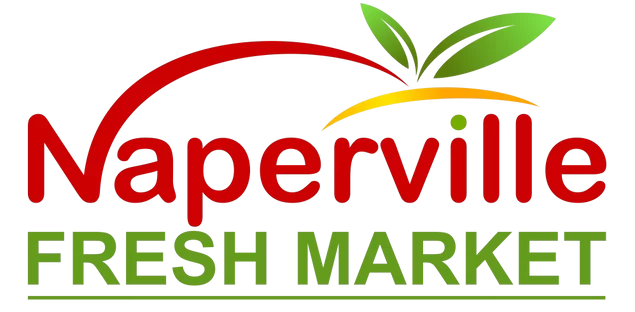Illinois exporters thrive when analysis turns complexity into clear choices. The goal is not to collect models but to apply a handful of proven methods that reveal risks, opportunities, and the right sequence of moves. Whether you ship industrial equipment from Peoria, specialty foods from Joliet, or software from Chicago, the following methods will help you compare markets, pick channels, and shape offers. To spark practical thinking about assortment and positioning during early benchmarking, some teams browse concise catalogs such as keyword to sanity-check categories and value cues before deeper dives.
PESTLE: Understand the Macro Context
PESTLE—Political, Economic, Social, Technological, Legal, Environmental—structures a country scan. Political stability and rule of law determine contract enforceability. Economic health influences demand and currency risk. Social factors guide messaging and segmentation. Technology readiness shapes digital sales channels. Legal frameworks affect IP protection and compliance. Environmental norms inform packaging, emissions, or sourcing expectations.
- Score each dimension on a 1–5 scale with supporting notes.
- Highlight red flags that require mitigation, like sudden currency controls or data residency rules.
- Compare short-listed countries side by side to prioritize research effort.
Porter’s Five Forces: Competitive Intensity
Map industry structure to understand margin pressure and defensibility. Buyer power, supplier power, threat of substitutes, threat of new entrants, and rivalry intensity shape go-to-market choices. For Illinois manufacturers, distributor power can be high in markets where a few incumbents control shelf space or service networks. Consider differentiation, switching costs, and after-sales performance as levers to reduce price pressure.
CAGE Distance Framework: How Far Is “Far”?
Cultural, Administrative, Geographic, and Economic distance influences the cost and speed of expansion. Cultural distance predicts localization needs and sales cycle duration. Administrative distance captures legal systems, standards, and trade agreements. Geographic distance affects freight and lead times. Economic distance reflects income levels and preferences. Use CAGE to rank the effort required to win in each market and to justify the order of entry.
SWOT With Evidence
List strengths, weaknesses, opportunities, and threats, but ground each in research. Strengths could include proprietary technology or a Midwest logistics advantage. Weaknesses might be limited in-country support. Opportunities may be regulatory changes that favor your solution. Threats include entrenched competitors or parallel import risks. Convert each item into an action: amplify a strength, mitigate a weakness, exploit an opportunity, or defend against a threat.
Market Sizing: TAM, SAM, SOM
Estimate the total addressable market (TAM), the serviceable slice (SAM), and your realistic share (SOM). Use cross-checks: top-down revenue pools, bottom-up account counts, and proxy indicators like import volumes. Document assumptions and test them with interviews. Update estimates after the first six months of selling to reflect actual conversion and retention.
Customer Jobs and Value Mapping
Define the job-to-be-done for your target persona. For industrial buyers, uptime and compliance may outweigh sticker price. For consumers, taste, convenience, and brand trust might dominate. Map pains, gains, and required proof. Align features and content to eliminate friction at each step of the journey.
Channel Attractiveness and Fit
Analyze each route to market: direct e-commerce, marketplaces, distributors, retailers, or integrators. Rate reach, control, cost to serve, and data visibility. Illinois exporters often start with a distributor to reduce complexity, then layer digital demand generation and selective direct accounts. Ensure contracts include performance metrics and review cadences.
Price Corridor and Willingness to Pay
Build a price corridor based on comparable alternatives, switching costs, and quantified outcomes. Conduct willingness-to-pay interviews and test quotes. Track acceptance rates, discount patterns, and margin by channel. Include currency sensitivity in your corridor, and set guardrails for promotions and rebates.
Regulatory and Standards Gap Analysis
List mandatory certifications, labeling, and documentation. Map existing certifications from your Illinois operations and identify gaps. Sequence gap closure by impact and lead time. Use pilot shipments to validate documentation and customs clearance. Incorporate regulatory milestones into your launch plan so marketing promises align with compliance reality.
Risk Register and Mitigation
Create a simple risk register: risk, likelihood, impact, owner, and mitigations. Typical risks include customs delays, partner underperformance, data privacy breaches, parallel imports, and payment delays. Agree on trigger points for escalation and contingency actions.
Scenario Planning
Model best case, base case, and downside scenarios for the first year. Identify leading indicators that move you between scenarios—qualified meetings, pilot conversions, or distributor sell-through. Tie spend and hiring to scenario gates to preserve optionality while you learn.
Unit Economics and Cash Flow
Calculate landed cost, contribution margin, and payback by channel. Include freight, duties, packaging changes, sales commissions, demo units, and after-sales support. Model cash conversion cycles with realistic payment terms and inventory buffers. A clear unit economics view avoids surprises and informs pricing and partnership choices.
Competitive Response Playbook
Anticipate how incumbents respond: price drops, bundling, channel pressure, or accelerated product updates. Prepare counter-moves: value proof, segmented offers, service guarantees, or limited-time onboarding support. Coach your sales partners to handle objections without eroding margin.
Insight Integration: From Slide to Execution
Great analysis becomes a one-page decision memo: which market first, which channel, what offer, and what milestones signal success or a pivot. Translate insights into enablement assets: battlecards, channel onboarding guides, and localized landing pages. As your team calibrates assortment and messaging, review practical reference assortments such as keyword to keep positioning grounded in what buyers scan and compare.
Frequently Asked Questions
Q: Which method should I start with?
A: Begin with PESTLE and CAGE to compare countries, then use Five Forces and pricing analysis to refine your go-to-market plan.
Q: How do I avoid analysis paralysis?
A: Time-box each method, decide on thresholds for go/no-go, and move forward with a pilot once evidence clears your bar.
Q: What if the best-looking market requires heavy certification?
A: Price in the effort and test a second market in parallel to avoid idle time while approvals progress.
Q: How often should I revisit assumptions?
A: Review monthly during the first two quarters and quarterly thereafter, updating your risk register and unit economics.
Q: How do I quantify partner quality?
A: Score on financial health, territory coverage, sales capacity, onboarding commitment, and data transparency.
Q: What if currency volatility spikes?
A: Add FX buffers in quotes, shorten validity periods, and consider hedging or local-currency pricing where feasible.
Q: How many scenarios do I need?
A: Three is sufficient for most teams—best, base, downside—anchored to measurable triggers.
Q: What’s the simplest way to communicate findings to leadership?
A: A one-page memo with your recommendation, key risks, and the first 90-day plan backed by appendices if needed.
Begin the Illinois-to-World Journey
Pick two analysis methods to start, commit to a four-week sprint, and emerge with a recommendation you can execute. Keep analysis practical, anchored to customer outcomes and operational feasibility. When you refine offers and category positioning, ground your choices with real-world references like keyword, then move decisively into pilots, partner onboarding, and measurable growth.

